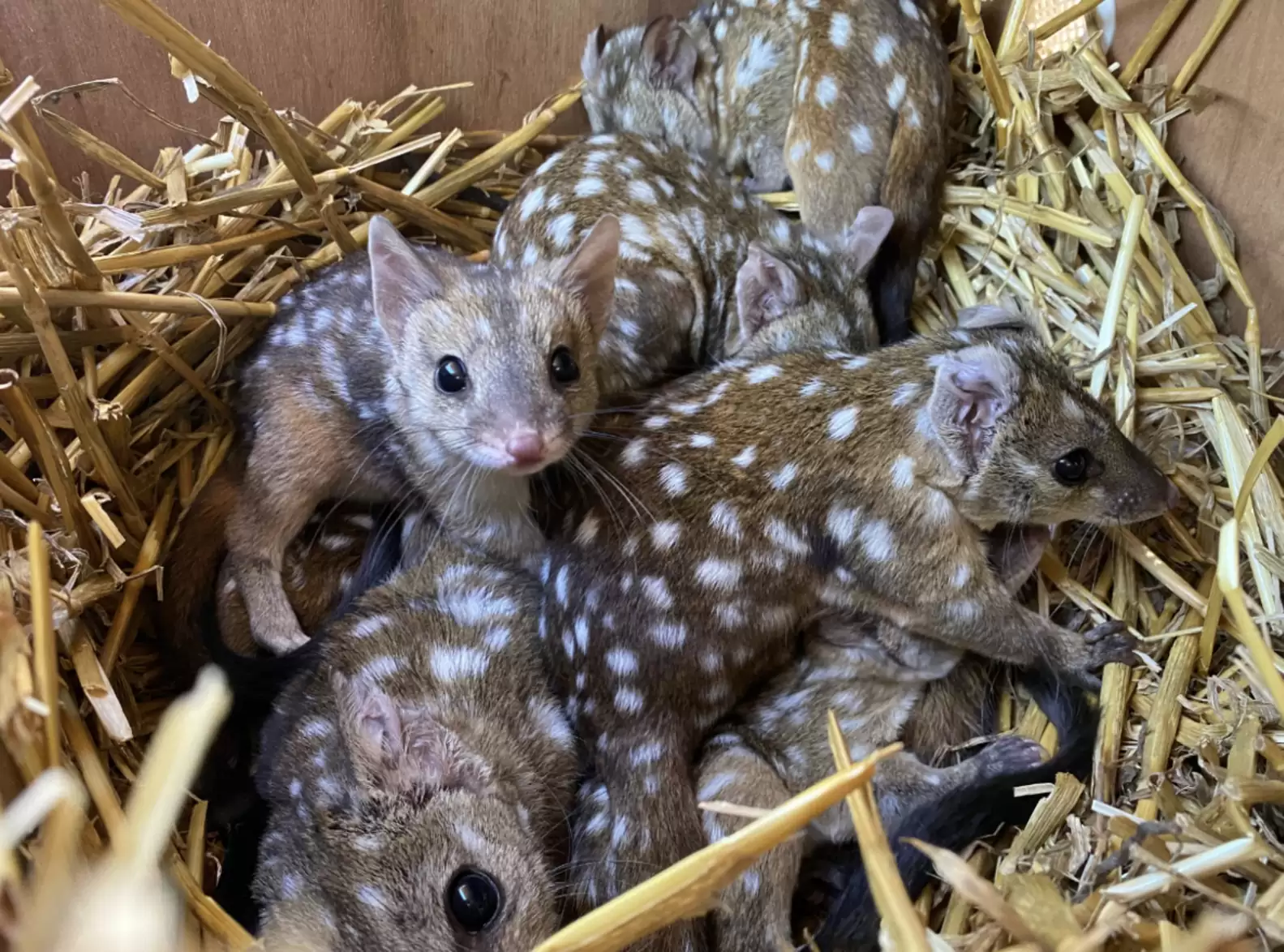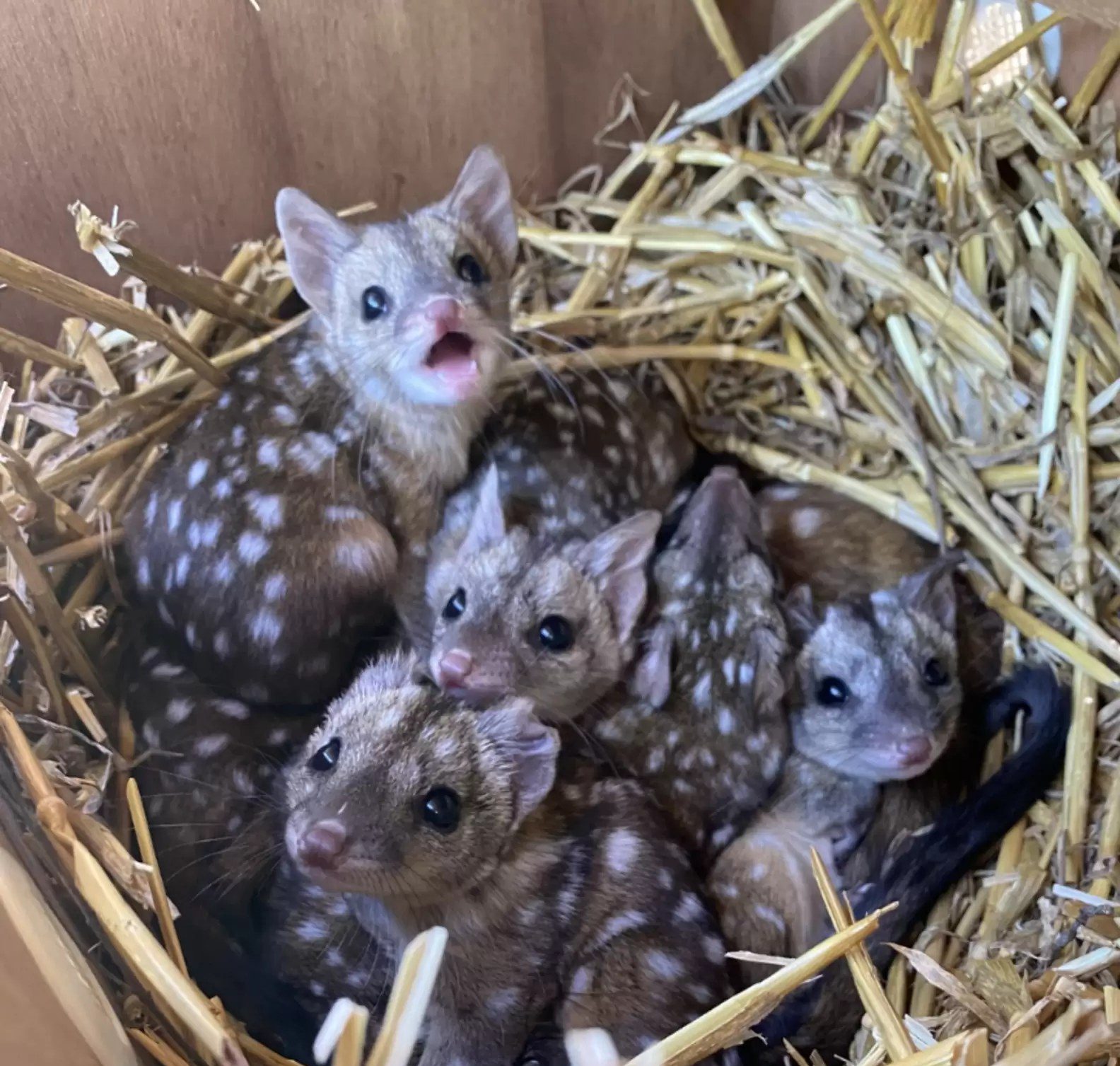Some wildlife conservation stories remind us just how close the world can come to losing a species—and how powerful it is when nature gets a second chance.
In the remote bushlands of Mt Gibson Wildlife Sanctuary in Western Australia, ecologists conducting a routine survey stumbled upon a sight that left them speechless. A cluster of female western quolls—a marsupial once thought to be locally extinct—had something stirring in their pouches.
Tiny movements. New life.
After years of effort and waiting, the sanctuary’s very first baby western quolls had finally arrived.
A Rare Marsupial Returns
Western quolls are cat-sized, nocturnal marsupials covered in golden-brown fur with white spots scattered like stars across their backs. Agile hunters, they help keep ecosystems balanced by controlling small reptiles, insects, and even young birds.
But for decades, their presence across mainland Australia has been fading. According to the Australian Wildlife Conservancy (AWC), the species once thrived across a vast stretch of the continent—from arid grasslands to dense forests. Then came European settlement, habitat destruction, and invasive predators such as foxes and feral cats.
“Following European settlement, their range contracted dramatically,” the AWC explained. “Apart from reintroductions, they are now found only in the south-western corner of Western Australia—and even there, their distribution is patchy.”
By the early 2000s, western quolls had vanished from most of their natural range, surviving only in small, isolated populations.
Full Story: The Dog Who Beat Cancer – A Reunion That Moved the World
Reintroducing Hope to the Outback
That grim reality began to change when the AWC and local ecologists decided to reintroduce western quolls to Mt Gibson Wildlife Sanctuary—a massive protected landscape carefully managed to remove invasive predators and restore natural balance.
For months, scientists monitored the newly released animals, tracking their movements, diet, and behavior. Every pawprint and sighting mattered. The quolls seemed to be settling in, but until now, no one had seen evidence of breeding.
Then came the breakthrough.
During a recent survey, researchers noticed several females with wriggling pouches—clear proof that the animals were not only surviving but thriving.
“Through regular monitoring, we can see the quolls are doing well at the sanctuary,” said Georgina Anderson, AWC’s senior field ecologist. “Encountering the first pouch young is a positive sign that they have adjusted to the new environment.”
It was the moment the team had been working toward for years.

Signs of a Strong Future
Each pouch held multiple tiny joeys—new generations of quolls born into a safer world. For scientists who have watched too many species disappear, these births were more than data points; they were symbols of hope.
The success of Mt Gibson’s program is also part of a wider national effort to repopulate western quolls in areas where they once roamed freely. This month alone, a new group of quolls was transported across the country to begin a similar reintroduction program.
“We are thrilled to see that Mt Gibson’s western quoll population has settled in,” Anderson added. “They’re showing promising signs of successful breeding.”
Such progress proves that with the right protection, species once written off as lost can rebound.
Also Read: Her Heart Belongs to Daddy – A Daughter’s Memory of Danny Kaye
Why It Matters
Western quolls play a critical ecological role, acting as both predator and prey in Australia’s delicate web of life. Their return signals that the environment at Mt Gibson is healing.
For the AWC, it’s not just about one species—it’s about restoring balance to landscapes damaged by invasive animals and human expansion. The sanctuary now serves as a living experiment in how thoughtful conservation can bring back biodiversity, even in areas where extinction once seemed permanent.
“These animals aren’t just surviving—they’re reminding us what’s possible,” one AWC volunteer said. “If we can bring the quolls back, we can bring others back too.”
The Bigger Picture
Across Australia, sanctuaries like Mt Gibson are proving that science, patience, and compassion can rewrite the future for endangered wildlife. The quoll’s revival joins a growing list of conservation success stories, from bilbies to numbats, showing that extinction doesn’t always have to be final.
Each joey wriggling in a mother’s pouch represents more than new life—it’s a living victory over decades of decline.
And while researchers still face challenges ahead—climate shifts, predators, and limited funding—the momentum is unmistakable.
Nature, when given a chance, always fights to return.
A Glimpse of Tomorrow
As dusk settles over Mt Gibson, the newly minted mothers emerge from their burrows, moving carefully under the stars. Somewhere in the tall grass, the next generation of western quolls stirs, ready to take its first breaths of open air.
For the scientists who found them, it’s a quiet triumph. For Australia, it’s a reminder that saving wildlife isn’t a dream—it’s a responsibility.
Because in the end, the best wildlife conservation stories aren’t just about the animals that survive.
They’re about the people who refuse to stop trying.



